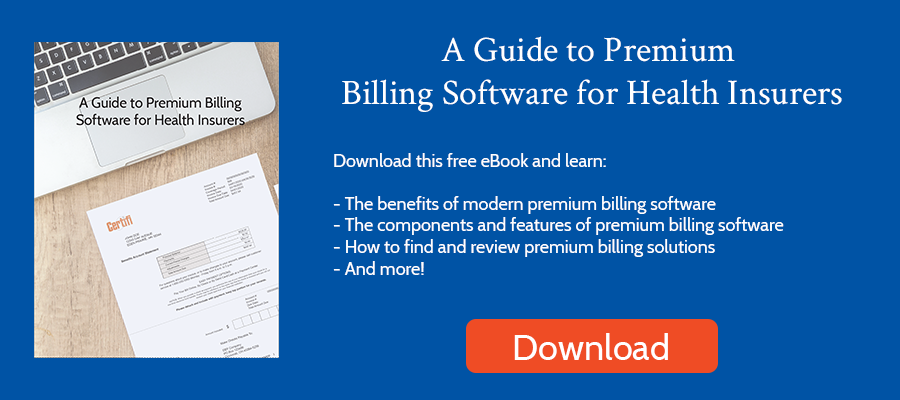If early preliminary health insurance filings are a guide, individuals who purchase health insurance on the individual market could see their premiums increase anywhere from 5% to 20% in 2024.
Most states require health plans to file preliminary health insurance premium rates for review sometime in the second quarter. States typically perform an actuarial analysis of those rates, post them for comment, and then approve final rates. States usually request rates from individual and small group health plans sold on and off health insurance exchanges.
Here’s a look at the 2024 health insurance preliminary premium rates in six states as well as some of the reasons given by health insurers for their rate changes:
New York
New York’s 2024 health insurance preliminary premium rates indicate residents could see significant premium increases. The state’s preliminary health insurance rates in the individual market ranged from a weighted average of 13.3% increase for MVP Health Plan to a weighted average of 52.7% increase for the Health Insurance Plan of Greater New York. Fidelis, the state’s largest individual market insurer, with 79,767 members, plans a weighted 18.2% increase. Overall, the state reported a weighted average 20.9% premium increase.
Here’s what’s driving the rate increases in the state, according to insurers:
Higher medical and pharmacy costs and increased member usage drive Fidelis’ nearly 20% increase. The potential expansion of the state’s Essential Plan, changes in the age and gender of its members, and the level of health and wellness among its members also play a role.
Healthfirst is the second largest health insurer in the individual market. The health plan indicated approximately 6% of its increase resulted from cost and utilization increases for inpatient hospitals, outpatient hospitals, and physical services. Prescription drugs – including greater use of specialty prescriptions – account for approximately an 8% rate increase.
Excellus, like Healthfirst and Fidelis, apportions much of its premium rise to the increasing cost and utilization of health care services. For example, the health plan expects a 14.7% increase in specialty prescription costs.
New York’s Department of Financial Services reviews and approves the preliminary rates. Final rates will likely be available in August.
Maryland
Maryland’s preliminary rate increases are mild compared to New York, with the state’s three insurers proposing an average increase of 5.7%. The largest insurer, CareFirst, proposed a 5.8% increase. Kaiser requested an 8% increase, while Optimum Choice submitted a 2% decrease in premium rates for the 2024 individual plan.
Among the reasons CareFirst gave for its increase include more claims and higher projected morbidity. Kaiser expects an increase in medical claims costs of 6.1%, while Optimum Choice cited lower-than-expected medical claims driving its premium decrease.
A public hearing is scheduled for July 19. Approved rates will likely be available in late August or early September.
Oregon
Oregon insurers, like Maryland’s, requested single-digit premium increases in 2024. In the individual market, rate change requests ranged from 3.5% for PacificSource Health Plans to 8.5% for Providence Health Plans. The weighted average increase was 6.2%.
The reasons for the increase are similar to other states, with PacificSource citing medical spending trends as the primary reason for increased premiums. Providence cited expected healthcare inflation, changes to provider contracts, and utilization increases. Of note, they also anticipated higher COVID-19 booster shot costs with the end of the emergency order.
Washington
Oregon’s neighbor, the state of Washington, will see slightly higher weighted health insurance premium rates, at 9.11%, according to preliminary filings. Asuris Northwest Health proposed a 3.39% decrease, though the plan covers just 0.4% of consumers. Meanwhile, Kaiser Foundation Health Plan of Washington, which covers over 22% of the market, requested a 17.9% increase.
For the Kaiser Foundation Health Plan of Washington, an expected 8% increase in annual medical costs contributes heavily to its requested 17.9% increase. The plan also cited higher-than-anticipated 2022 claim costs and a projected increase in the morbidity of members. Though Asuris Northwest Health expects a projected 9% increase in medical trends and utilization, it foresees lower claims based on 2022 data.
The state will release final rates by September.
Connecticut
Connecticut’s rate increase is closer to its New York neighbor, with an average increase of 12.4% in the individual market. The average increase by plan ranged from 9.8% for Anthem Health Plans to 17.5% for ConnectiCare Insurance Company.
Like most health insurers, rising medical costs and increased demand accounted for most of the requested increase by ConnectiCare. The health plan also highlighted that they expect Medicaid redeterminations to lead to a portion of the Medicaid population choosing ACA plans. That migration would increase the overall cost of the member pool. Anthem Health Plans also pointed to medical cost inflation, increased demand, and provider contracting changes as the primary drivers for its 9.5% increase request.
Connecticut expects to release final rates in late August or early September.
Vermont
Vermont’s premium rate increase will likely be similar to that of its neighbor, Connecticut. The state has two plans – Blue Cross Blue Shield of Vermont and MVP Health Care – offering individual health plans to approximately 30,000 members. Those plans seek a weighted average of a 14.5% increase in 2024, with MVP Health Care seeking a 12.8% increase and Blue Cross Blue Shield of Vermont requesting a 15.5% increase.
Blue Cross Blue Shield of Vermont apportioned most of its increase request – nearly 10% – to increasing hospital and prescription costs. MVP Health Care had a similar rationale for its increase – including medical cost inflation and an uptick in service utilization – representing 7.5% of its premium rate growth. Interestingly, though, the plan also said that 0.3% of the raise can be attributed to 2024 being a leap year and having an extra day.
Like other states, Vermont will likely release final rates in August or early September.
Certifi’s health insurance premium billing and payment solutions help healthcare payers improve member satisfaction while reducing administrative costs.



